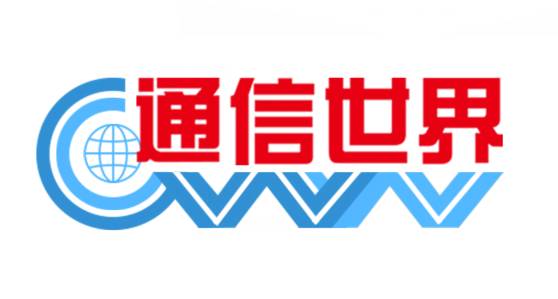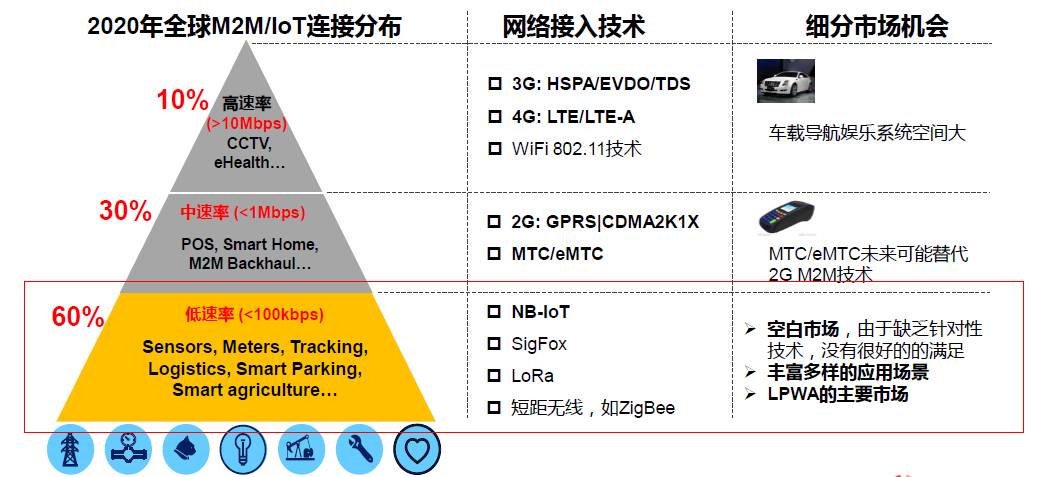
In the past two years, there has been considerable debate among stakeholders in various IoT technologies regarding which technology holds more advantages. Are these technologies moving towards integration or continuing to compete? Will the future be one of coexistence or selective development?

According to consulting firm IDC, the market size of IoT is expected to reach $1.7 trillion by 2020. The largest demand comes from the industrial sector, with the concepts of “Industry 4.0” and smart manufacturing accelerating into reality. McKinsey predicts that the IoT output value in manufacturing will reach $2.5 trillion by 2025.
As a result, at the 2017 Mobile World Congress (MWC), IoT became the hottest topic, with vertical industries and operators from around the world showcasing IoT applications and technologies.
In fact, IoT is a significant scenario for 5G, and countries are actively developing IoT technologies, leading to the emergence of various IoT technologies with different speeds. Among them, NB-IoT, eMTC, and LoRa have garnered significant attention.
NB-IoT is a cellular IoT technology based on narrowband (200KHz), specifically designed for low-power, wide-coverage IoT applications (based on FDD mode); eMTC operates on the LTE system, expanding new functionalities for low-power, wide-coverage IoT applications, and can achieve software upgrades on the LTE system (FDD mode, TDD mode).
In addition to the two aforementioned IoT technologies operating in licensed frequency bands, there are also IoT technologies operating in unlicensed frequency bands, such as LoRa/Sigfox. Notably, LoRa has taken the lead in the market for low-power, short-range applications, with operators expressing support for both technologies.

In 2017, global IoT construction is expected to undergo large-scale development, and the research and commercialization progress of the aforementioned IoT technologies has attracted widespread attention. In the global telecommunications operator market, operators from countries and regions such as China, the United States, Japan, South Korea, and Europe are extensively deploying NB-IoT and eMTC technologies.
Regarding NB-IoT, GSMA predicts that the emergence of NB-IoT will greatly promote the development of the cellular IoT industry, with 3 billion IoT connections expected to be supported on operator networks by 2020, representing a sevenfold increase compared to today. In terms of NB-IoT, the commercial progress and scale of China’s three major operators are already leading the world.
However, foreign operators have many differences in their attitudes towards the three technologies compared to Chinese operators. According to authoritative predictions, in the future trillion-dollar IoT market, North America, Western Europe, and the Asia-Pacific region will account for over 80% of the market size.
It is reported that European operators are considering both NB-IoT and eMTC, but NB-IoT is progressing faster. North American operators prefer eMTC.
In March 2017, Verizon launched nationwide commercial use of eMTC in the United States, with extensive network coverage. In late February 2017, AT&T, KPN, KDDI, NTT docomo, Orange, Telefonica, Telstra, TELUS, and Verizon confirmed support for the global deployment of eMTC at MWC 2017.
Additionally, LoRa has also seen widespread application globally. For instance, SKT in South Korea and Tata Communications in India have begun deploying LoRa backbone networks nationwide. Statistics show that 16 countries, including France, the Netherlands, and the United States, have deployed LoRa networks. Some analysts believe this is a choice made by certain operators under market pressure.
“Foreign operators’ construction of IoT also considers various factors such as cost, upgrade methods, and development prospects,” said an industry expert. This is similar to domestic operators. However, there are many small and medium-sized operators abroad, and their management methods lead to diverse construction ideas.
Specifically, how do domestic operators position these three technologies?
China Telecom: Firmly Committed to NB-IoT, Upgrading Network to Support eMTC Within the Year
Due to the lack of a subsequent evolution route after the development of China Telecom’s CDMA network to 3G, the company is bound to fully commit to building an FDD-based NB-IoT network, without any indecision in choice, focusing efforts in one direction. On May 17, China Telecom announced the completion of the world’s currently most widely covered commercial next-generation IoT (NB-IoT) network, achieving upgrades for 310,000 base stations.

On January 20, 2017, China Telecom was the first in the world to release the NB-IoT V1.0 network version based on the 3GPP standard, which is the world’s first complete set of NB-IoT enterprise standards that can be tested, constructed, and commercialized. In the first quarter of 2017, China Telecom conducted network testing and interconnectivity penetration work for the NB-IoT V1.0 network version in commercial networks through large-scale external field tests in seven provinces and cities and twelve cities, completing network-side testing in March of this year.
In March 2017, Shenzhen Water Group and China Telecom jointly announced the successful launch of the world’s first NB-IoT smart water management commercial project. On May 17, China Telecom announced the establishment of the world’s largest NB-IoT commercial network.
To promote the development of NB-IoT and CAT1, China Telecom officially released a special subsidy of 300 million yuan for IoT, with a subsidy of 20 yuan/module for NB-IoT modules, planning to subsidize 5 million modules; a subsidy of 40 yuan/module for CAT1 single-mode modules, planning to subsidize 2.5 million modules; additionally, China Telecom plans to invest 100 million yuan to subsidize key IoT projects, with module subsidies as the main incentive, continuing the basic policy from 2016: 2G/3G subsidy ≤ 20 yuan, 4G full-mode subsidy ≤ 40 yuan.
In the future, China Telecom plans to support a full range of services from high-speed 4G+(CA), medium-low speed CAT1, to NB-IoT, etc. At the same time, China Telecom is actively preparing for and trial commercializing 5G, advancing the layout of next-generation IoT services and ecosystems.
Industry insiders analyze that China Mobile currently does not have an FDD license, and China Unicom’s main deployment of NB-IoT is in the 1800MHz band, with an immature industrial chain. Therefore, in terms of large-scale commercial use of NB-IoT, China Telecom is expected to maintain a leading position in the domestic market for a long time.
China Unicom Clearly Promotes NB-IoT, Pilots eMTC, and Focuses on LoRa
In the development of LPWAN (Low Power Wide Area Network), China Unicom, like China Telecom, is clearly promoting the development of NB-IoT. However, China Unicom is slower in pace and smaller in scale. The frequency bands used by both parties are also different. While focusing on NB-IoT, China Unicom has also initiated eMTC pilot projects, with plans for large-scale development of eMTC applications in the future. Moreover, China Unicom believes that LoRa may serve as a good complement to cellular wide-area access.
China Unicom is one of the earliest operators to engage in the IoT industry. In February 2015, its smart water meter prototype was showcased at the Mobile World Congress, accumulating a wealth of achievements in the early stages of NB-IoT. Last year, China Unicom released a Disney smart parking model, which includes 10 planned NB-IoT sites and over 5,000 parking spaces in the park, enabling intelligent functions such as parking management, space inquiry, and reverse car searching.

Currently, China Unicom has launched NB-IoT pilot projects in more than ten cities, including Shanghai, Beijing, Guangzhou, and Shenzhen, and is expected to support tens of millions of connections by 2018. Among them, Shanghai Unicom serves as the bridgehead for Unicom Group in the field of NB-IoT, having built the largest scale pilot commercial network in the country with 800 sites as of February this year, making it the first provincial operator in China to achieve full coverage and launching numerous commercial cases.
However, in terms of overall advancement pace, China Unicom is slower than China Telecom.Moreover, there are differences in network deployment strategies between the two operators. China Telecom deploys NB-IoT in the 800MHz low-frequency band, while China Unicom deploys it in the 900Hz/1800MHz dual-band. Due to limited spectrum resources in the 900MHz band, China Unicom has to upgrade and deploy over 80% of its NB-IoT base stations in the 1800MHz band.
In the process of promoting NB-IoT pilot commercialization, China Unicom has initiated eMTC pilot projects. This is because China Unicom believes that these two technologies are not mutually exclusive but rather complementary. In the future, eMTC will carry more traditional cellular network business upgrades and some LPWAN demands.
In addition to NB-IoT and eMTC, China Unicom is also paying attention to other IoT technologies, such as LoRa. China Unicom believes that although LoRa currently shows a trend of advanced commercialization in the entire industry, it may have certain limitations in coverage (due to domestic policy influences, outdoor wide-area coverage is restricted), so LoRa may serve as a good complement to cellular wide-area access. Therefore, while promoting the evolution of cellular networks, China Unicom will supplement with LoRa as needed, accelerating the migration of 2G IoT.
China Mobile Balances NB-IoT and eMTC, May Use LoRa as a Supplement
All major domestic operators are actively deploying NB-IoT networks, with China Telecom and China Unicom announcing that their respective NB-IoT networks are commercially available. Although China Mobile has not announced commercial use, it is also not falling behind. Recently, Mobike announced a strategic partnership with Sichuan Mobile and equipment vendors to launch the world’s first NB-IoT 900MHz shared bicycle business trial in Sichuan.
China Mobile has long been working on the deployment of NB-IoT and the development of eMTC, having deployed the first city-level NB-IoT network in January of this year. Commercial use of eMTC is still pending. “In 2017, China Mobile will conduct large-scale trials of NB-IoT and eMTC in four cities: Hangzhou, Shanghai, Guangzhou, and Fuzhou, and will subsequently carry out commercial use in multiple key cities, achieving full network commercial use by 2018,” announced China Mobile President Li Yue at MWC 2017.
In the view of China Mobile experts, compared to NB-IoT, eMTC has several advantages: eMTC has a bandwidth of about 1.4MHz, while NB-IoT has only a few hundred kHz, making eMTC more suitable for services with higher rate requirements; eMTC supports voice and theoretically supports VoLTE; eMTC has better support for mobility, ensuring business continuity during cell handovers.
However, currently, NB-IoT only has one FDD mode, while eMTC has both FDD and TDD modes. The FDD product development of eMTC is already quite mature, and since China Mobile currently does not have an FDD license, it cannot use FDD eMTC. Given that a large proportion of global operators use FDD networks, global manufacturers generally develop eMTC starting from the FDD mode, while the industrial progress of TDD eMTC is slower than that of FDD eMTC. In terms of TDD networks, China Mobile is currently the largest TDD network operator globally and is actively promoting the development of the TDD eMTC industry.
In China Mobile’s view, in addition to actively developing authorized frequency band IoT technologies, unlicensed frequency band technologies such as LoRa may also serve as a supplement to IoT.
Written by: Huang Haifeng, Yun Shu, Communications World All-Media Journalists
China Unicom: Wang Jianying


Follow Communications World by long-pressing
WeChat ID: CWW-weixin
Official Account of Communications World
Latest | Industry | News
About Communications World
A comprehensive media service platform
Supervised by the Ministry of Industry and Information Technology, hosted by the People’s Posts and Telecommunications Press,
it is a forward-looking media outlet for China’s telecommunications industry
